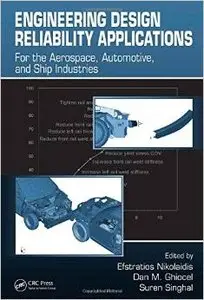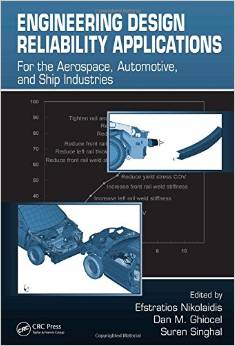Engineering Design Reliability Applications: For the Aerospace, Automotive and Ship Industries by Efstratios Nikolaidis
English | Sep 19, 2007 | ISBN: 1420051326 | 376 Pages | PDF | 7.4 MB
English | Sep 19, 2007 | ISBN: 1420051326 | 376 Pages | PDF | 7.4 MB
In the current, increasingly aggressive business environment, crucial decisions about product design often involve significant uncertainty. Highlighting the competitive advantage available from using risk-based reliability design, Engineering Design Reliability Applications: For the Aerospace, Automotive, and Ship Industries provides an overview of how to apply probabilistic approaches and reliability methods to practical engineering problems using real life engineering applications. A one-step resource, the book demonstrates the latest technology, how others have used it to increase their competitiveness, and how you can use it to do the same.
The book makes the case for accurate assessment of the reliability of engineering systems, simple, complex, or large-scale. It presents two computer programs for reliability analysis and demonstrates these programs on aircraft engines, structures used for testing explosives, medical and automotive systems. The focus then shifts to aircraft and space systems, including lap joints, gas turbines, and actively controlled space structures. The editors provide analytical tools for reliability analysis, design optimization, and sensitivity analysis of automotive systems. They include a general methodology for reliability assessment of ship structures and highlight reliability analysis of composite materials and structures.
Delineating generic tools and computer programs applicable to any situation, the book shows you how to quantify, understand, and control uncertainties, reduce risk, and increase reliability using real-life examples. Engineers from the industry and national labs as well as university researchers present success stories and quantify the benefits of reliability design for their organizations. They demonstrate how to convince colleagues and management of the potential benefits of these approaches in allowing their organizations to gain significant benefits and dramatically increase their competitiveness.



